15,500 infantry2,000 cavalry30 guns 9,50014 guns | Date 10 May 1796 | |
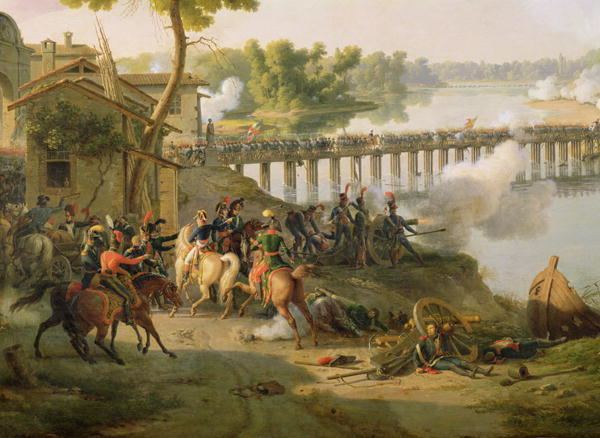 | ||
1,000 3,200 killed or wounded2,000 captured14 gunsbaggage Combatants French First Republic, Habsburg Monarchy Similar Battle of Arcole, Battle of Rivoli, Battle of Castiglione, Battle of Montenotte, Battle of Mondovì | ||
Historical battle of lodi charge of the grenadiers napoleon total war gameplay
The Battle of Lodi was fought on 10 May 1796 between French forces under General Napoleon Bonaparte and an Austrian rear guard led by Karl Philipp Sebottendorf at Lodi, Lombardy. The rear guard was defeated, but the main body of Johann Peter Beaulieu's Austrian Army had time to retreat.
Contents
- Historical battle of lodi charge of the grenadiers napoleon total war gameplay
- very hard battle of lodi napoleon total war historical
- French Army
- Austrian Army
- Battle
- Aftermath
- References
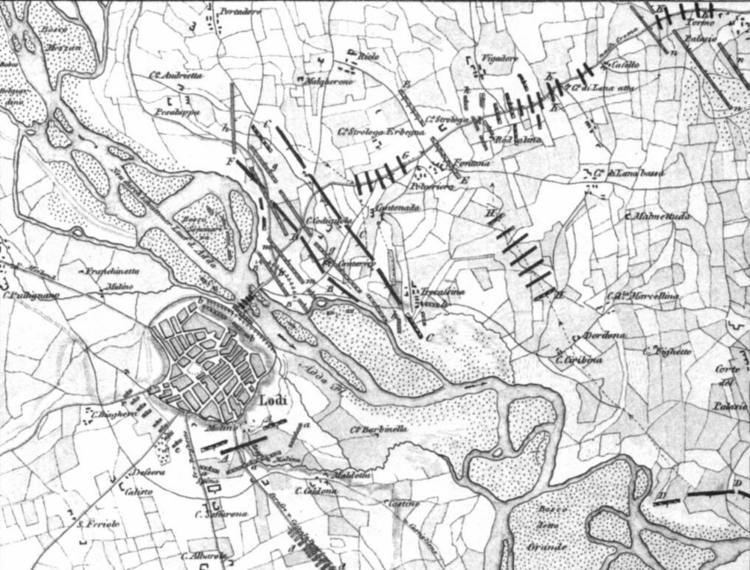
very hard battle of lodi napoleon total war historical
French Army
French Army: General Napoleon Bonaparte (15,500 infantry, 2,000 cavalry)
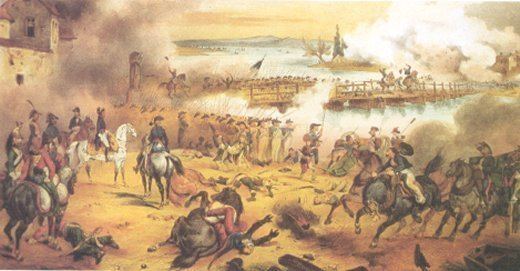
Austrian Army
Austrian-Neapolitan Army: Beaulieu (not present)
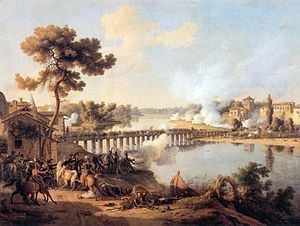
Battle
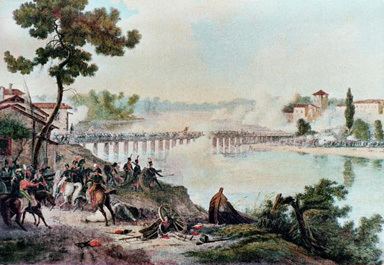
The French advance guard caught up with Josef Vukassovich's Austrian rear-guard at about 9 am on 10 May and after a clash followed them towards Lodi. Vukassovich was soon relieved by Gerhard Rosselmini's covering force near the town. The town's defences were not strong, the defenders were few, and the French were able to get inside and make their way towards the bridge. The span was defended from the far bank by nine battalions of infantry arrayed in two lines and fourteen guns. The Austrian general in command at Lodi, Sebottendorf, also had four squadrons of Neapolitan cavalry at his disposal, giving him a total of 6,577 men, who were mostly completely exhausted after a hasty forced march. Sebottendorf decided that it was inadvisable to retire in daylight, and opted to defend the crossing until nightfall.

One eye-witness (a grenadier called Vigo-Roussillon) stated that the Austrians had men attempting to destroy the bridge, but that the French stopped their efforts by bringing up guns to fire along its length. It should have been fairly easy to prevent a French crossing because the bridge was wooden, and could have been burnt. It was about 200 yards long, and was a very simple structure consisting of piles driven into the river bed every few yards, with beams laid to form a roadway.
The French advance guard was not strong enough to try to cross the bridge, so several hours passed while further French forces came up. During the afternoon, a violent cannonade began, as French guns arrived and were positioned to fire across the river. It has been suggested that Bonaparte was personally involved in directing some of the guns, and that his troops began to refer to him as le petit caporal (the little corporal) because of this, but there seems to be little, if any, contemporary evidence to back this up.
Eventually, at about 6 pm, the French prepared for an attack, with Marc Antoine de Beaumont's cavalry being sent to ford the river upstream, and a column consisting of the 2nd battalion of carabiniers (elite light infantry) being readied inside the walls of the town. The carabiniers then stormed out of the gates and onto the bridge. Vigo-Roussillon stated that the enemy artillery fired one salvo when the troops were part-way across, causing numerous casualties, at which point the column wavered and stopped, but a number of senior French officers rushed to the head of the column and led it forward again. These officers included André Masséna, Louis Berthier, Jean Lannes, Jean-Baptiste Cervoni, and Claude Dallemagne. (Some authorities suggest that the French retreated and attacked again, but an important Austrian source supports the thesis of a single attack.)
Some of the French climbed down the piles and waded through the water, firing as they went. The Austrian troops were already exhausted from hours of marching and fighting without food, probably demoralised by the French cannonade, and also seem to have been worried about being cut off by the French cavalry. Their morale collapsed as the carabiniers rushed towards them, and a hasty retreat ensued, the fugitives making the most of the gathering dark to make their escape towards Crema, though some brave units discouraged the French from pursuing too closely. Oberst Count Attems of Terzi Infantry Regiment # 16 was killed covering the successful, though costly withdrawal.
Austrian losses were 21 officers, 5,200 men, and 235 horses killed, wounded, or captured. In addition, 12 cannons, 2 howitzers and 30 ammunition wagons had been lost. French losses were around 1,000.
Aftermath
The Battle of Lodi was not a decisive engagement, since the Austrian army had successfully escaped. But it became a central element in the Napoleonic myth and, according to Napoleon himself, contributed to convincing him that he was superior to other generals, and that his destiny would lead him to achieve great things.
